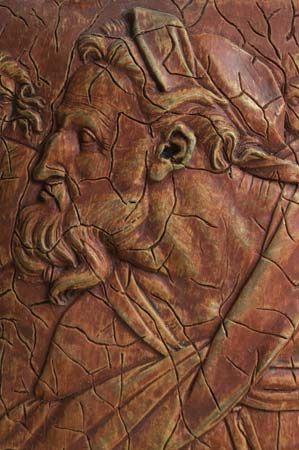- Texts and versions
Other types of exegetical critical techniques
Our editors will review what you’ve submitted and determine whether to revise the article.
- Related Topics:
- number of the beast
- Hebrew Bible
- mammon
- Bible
- biblical criticism
Redaction criticism
Redaction criticism concentrates on the end product, studying the way in which the final authors or editors used the traditional material that they received and the special purpose that each had in view in incorporating this material into his literary composition. It has led of late to important conclusions about the respective outlooks and aims of Matthew, Mark, Luke, and John.
Historical criticism
Historical criticism places the documents in their historical setting and promotes their interpretation in the light of their contemporary environment. This is necessary for their understanding, whether they are historical in character or belong to another literary genre. If they are historical in character, it is important to establish how faithfully they reflect their dramatic date—the date of the events they record (as distinct from the date of final composition). This test has been applied with singularly positive results to Luke–Acts, especially in relation to Roman law and institutions; and in general the biblical outline of events from the middle Bronze Age (c. 21st–c. mid-16th century bce) to the 1st century ce fits remarkably well into its Near Eastern context as recovered by archaeological research.
“History of religions” criticism
“History of religions” criticism, to use an ungainly expression, relates Old and New Testament religion to the religious situation of the contemporary world of the writings and tries to explain biblical religion as far as possible in terms of current religious attitudes and practices. This is helpful to a point, insofar as it throws into relief those features of Hebrew and Christian faith that are distinctive; it is carried to excess when it attempts to deprive those features of their unique qualities and to account completely for them in religious–historical terms. When the cult of Israel was practically indistinguishable from that of the Canaanites, the protests of the 8th-century-bce Hebrew prophets Amos or Hosea stand out over against popular Yahweh worship (Hebrew) and Baal worship (Canaanite) alike. Another attempt has been made by historians of religion to re-create for the 1st century ce a pre-Christian Gnostic myth—referring to an esoteric dualism in which matter is viewed as evil and spirit good—of the primal or heavenly man who comes from the realm of light to liberate particles of a heavenly essence that are imprisoned on Earth in material bodies and to impart the true knowledge. By men’s acceptance of this secret salvatory knowledge (gnosis), the heavenly essence within man is released from its thraldom and reascends to its native abode. Fragments of this myth have been recognized in several books of the New Testament. But the attempt has not been successful: according to many recent (latter half of the 20th century) New Testament scholars and historians of the early church, it is probable that the concepts of primal man and redeemer-revealer were not brought together in Gnosticism except under the influence of the Christian apostolic teaching, in which Jesus fills the role of Son of man (or Second Adam) together with that of Saviour and Revealer.
On the other hand, the Iranian religious influence, primarily that of Zoroastrianism, on the angelology and eschatology (concepts of the last times) of Judaism in the last two centuries bce is unmistakable, especially among the Pharisees (a liberal Jewish sect emphasizing piety) and the Qumrān community (presumably the Essenes) near the Dead Sea. In the latter, indeed, Zoroastrian dualism finds clear expression, such as in the concept of a war between the sons of light and the sons of darkness, although it is subordinated to the sovereignty of the one God of Israel.
The value of these critical methods of Bible study lies in their enabling the reader to interpret the writings as accurately as possible. By their aid he can better ascertain what the writers meant by the language that they used at the time they wrote and how their first readers would have understood their language. If the understanding of readers today is to have any validity, it must bear a close relationship to what the original readers were intended to understand.
For additional information about the various forms of biblical criticism, see above: Old Testament canon, texts, and versions; and New Testament canon, texts, and versions.




















